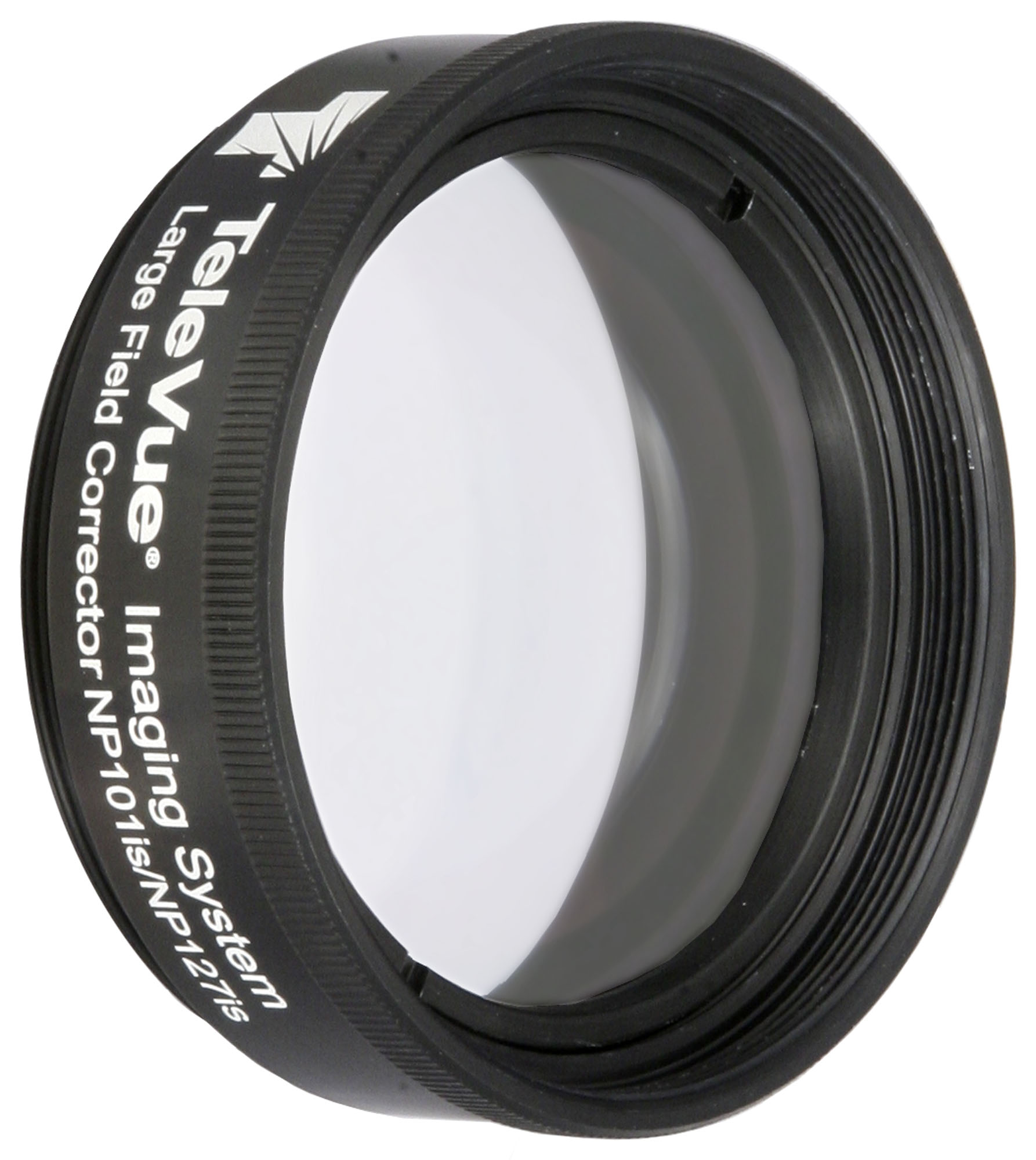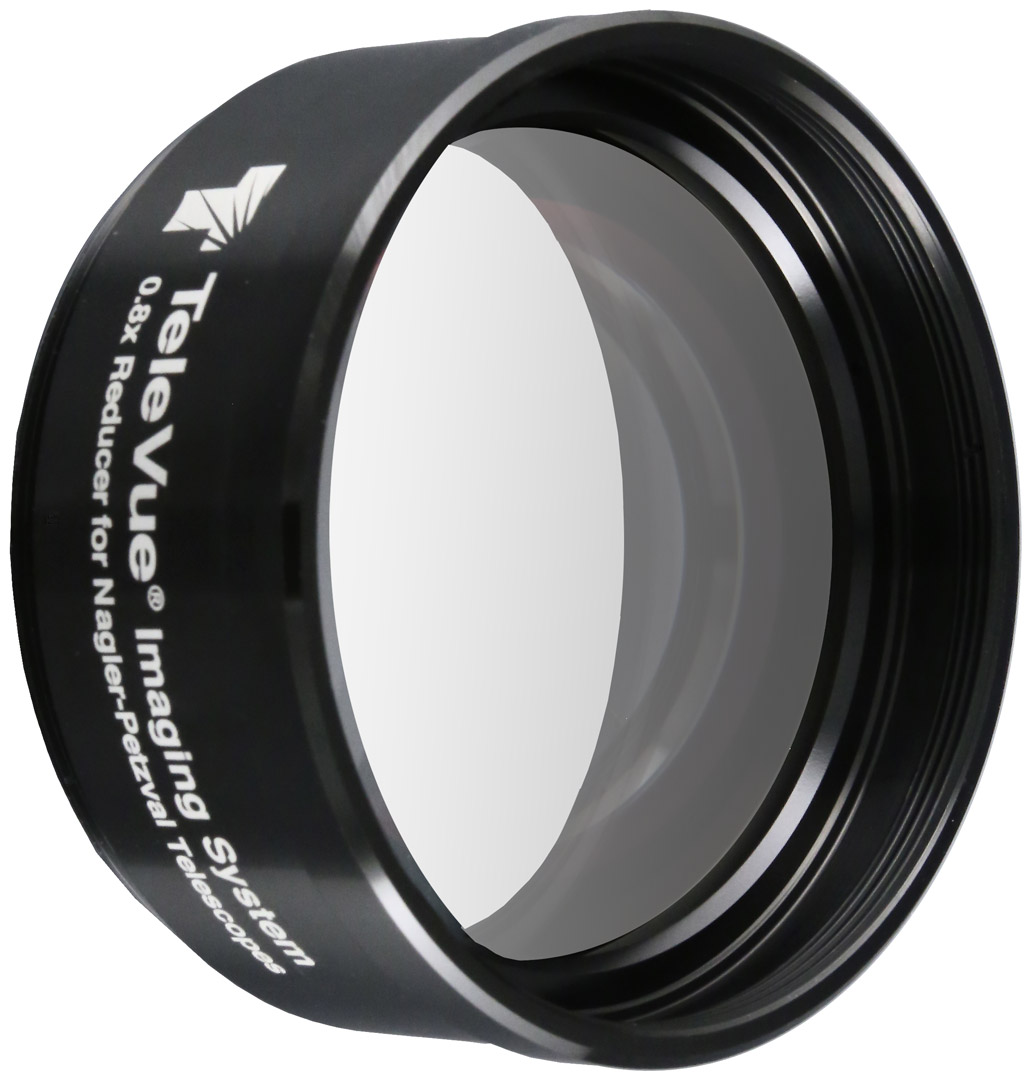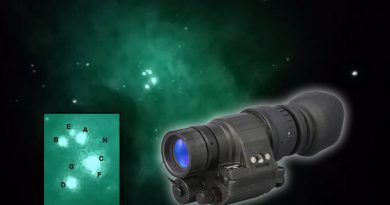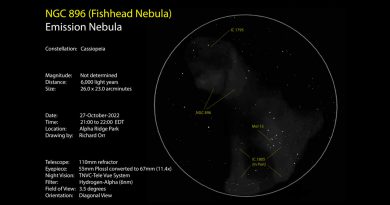Tele Vue-NP127is Imaging the Skies over Southern Poland!
We found some great images taken by Jan Bielański with the Tele Vue-NP127is under Bortle 3 (rural) skies in southern Poland. He uses a QHY full-frame camera with our Tele Vue LCL-1069 Large Field Corrector for capturing these images. He also employs an extensive suite of software tools.
We asked him about his journey into astrophotography and why he chose the Tele Vue-NP127is for searching out and imaging deep-sky treasures. Like many imagers we’ve spoken to, the journey did not start with a Tele Vue telescope. For Jan, it began in 2009 with a Sky-Watcher 130mm, f/7 reflector for visual and initial imaging tests. This led in 2017 to a Celestron EdgeHD 8″ for imaging. Two years later a big, heavy Celestron 11” XLT arrived along with a medium-speed TS 130mm, f/7 APO refractor. This smaller scope quickly became his prime imaging instrument. Then in 2020 Jan acquired a QHYCCD QHY600M camera. Two years of working with this camera helped him define what kind of telescope was really needed. This is what sent him onto a trajectory toward Tele Vue. He explains in his own words below.
Imaging Telescope Criteria
In 2020 I got my favourite camera: the QHYCCD QHY600M (full-frame). After two years of usage with this camera, I learned what telescope I needed for imaging:
- A fast scope to acquire huge fields of view
- Light-weight scope which is easy to mount/dismount in the field
- Fully corrected scope with flat-field (QHY600M camera does not forgive)
- Having as big as possible aperture to allow high angular resolution
- Maximise usage during the few nights with perfect weather during the year
So, with criteria established, how did Jan settle on the Tele Vue-NP127is? He tells us that only Tele Vue and Takahashi brands met the criteria. At the start of 2021, a colleague informed him of a buying opportunity for a Tele Vue scope and Jan did some research before deciding.
Buying and Initial Impressions
After two weeks of reading, analyzing, and thinking, I made the best decision I could: to sell all of my telescopes and buy the TeleVue-NP127is. During the first several months, I used the scope visually while waiting for the Tele Vue LCL-1069 Wide-Field Corrector and some additional connectors which would allow it to achieve a perfect imaging configuration. Visually, it leaves other scopes with similar aperture far behind.
Let’s take a look at some of Jan’s images before we delve further into Jan’s imaging with the Tele Vue-NP127is.
IRIS NEBULA
A cosmic, flowering, blue iris peaks out from behind a knot of dark gas. However, the petals of this flower are 6 light-years across! In the Iris nebula (NGC-7023 or Caldwell 4) the blue color is dust reflecting light from a nearby star and the brownish knotty structures around it comes from dust glowing red from ultraviolet radiation.

WOLF’S CAVE
This is the Wolf’s Cave region in the constellation Cepheus. The dark pillar shown horizontally from center to right is a “Bok globule” (a small dark concentration of dust and gas from which star formation may take place) named Barnard 175. On the left side, it is topped by the blue reflection nebula known as VdB 152 or Ced 201.
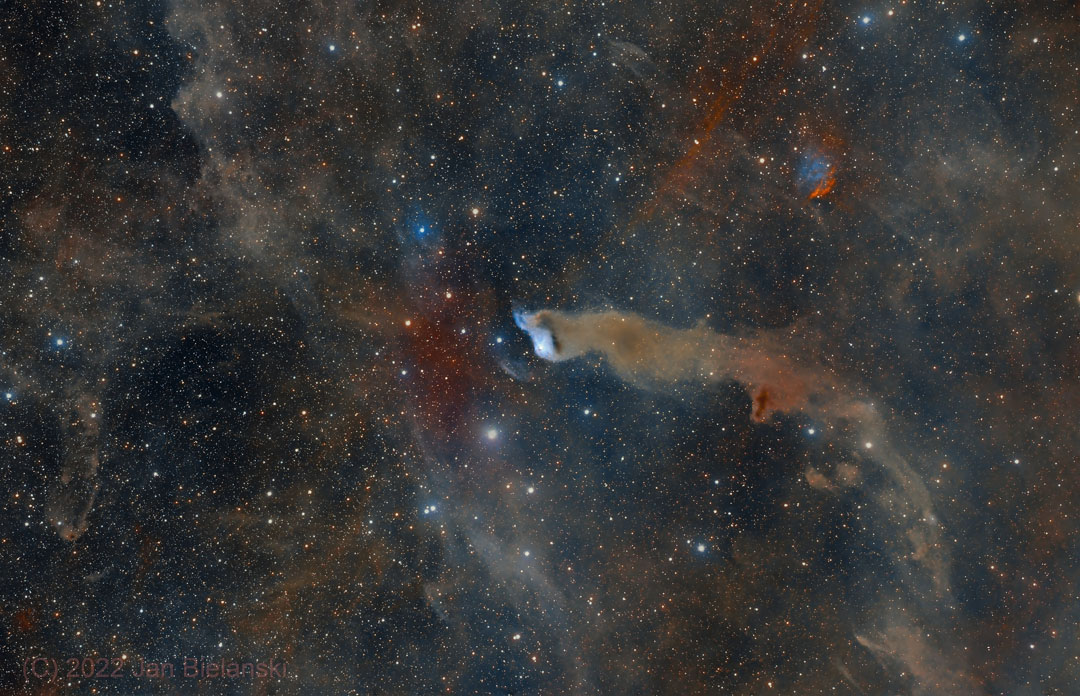
Next, we discuss Jan’s impressions upon imaging with the scope, what he’s learned by using it, and future hardware upgrades.
Imaging Impressions
After I finally configured the equipment for imaging, I started taking photos. Of course, there was a period when I was getting to know how to use it and how to process the images. After one year of learning, my images became much better than all of the images which I had taken before. The following have contributed to this:
- TeleVue-NP127is is the best telescope for obtaining perfect raw frames
- The TeleVue-NP127is with QHYCCD 600M (or similar camera) allows one to archive things that weren’t possible in the past: a huge 3×2 degrees field and high resolution at 1.144 arcsec/pixel
- My increased experience with PixInsight processing
- Finding the perfect software suite including StarXTerminator, BlurXTerminator, NoiseXTerminator to manipulate images
Future Hardware
I’m prepared to experiment a bit with the current configuration. I have typical filters, such as: L, R, G, B, Ha, SII, OIII, and also IR pass which gives me interesting results. So what’s next? I do not plan to change the scope, but I would like to see how this setup will work with the TeleVue-NPR-2073 0.8x Reducer. I’ve made some simulations and I should get fantastic results, such as:
- The Heart and Soul Nebula should fit in the field
- I can capture the Andromeda galaxy without putting it on the diagonal
- With a drizzle algorithm, I can achieve theoretical telescope resolution for pixel size
GHOST NEBULA
The Ghost Nebula (Sh2-136, VdB 141) is a reflection nebula and dark nebula in Cepheus that has a ghostly apparition. The bluish parts are reflected dust while the brownish glow is dense dust and gas energized by the light a young stellar object in the nebula. The spectacular red star is T Cephei, a red giant variable star that fluctuates between magnitudes 5.2 and 11.3 with a period of 388 days.
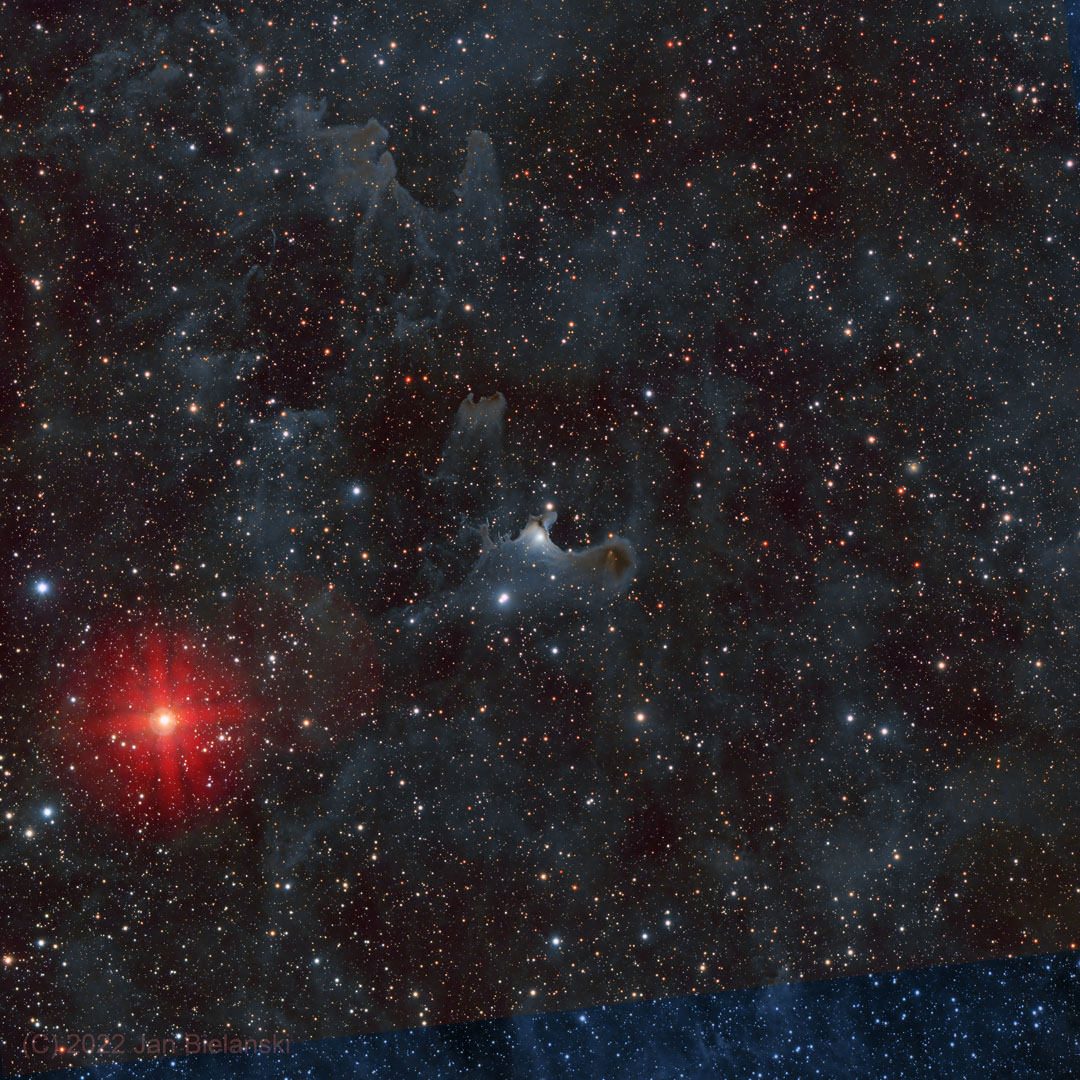
Next, Jan told us about the software he uses to acquire sub-frames and process them into the final image.
Image Processing Technique and Learning Tools
For image acquisition, I have a dedicated computer with open source software: Linux operating system, INDI (driver), CCDCiel (acquisition), SkyChart (sky map), PHD2 (guiding). I use the CCDCiel session plan tool and prepare all night operations. I don’t use the automatic focus during the night. I check the focus three to four times, if needed I pause the session and manually focus again. For image processing, I have a second high-end computer where I use the PixInsight with RC Astro suite (StarXTerminator, BlurXTerminator, NoiseXTerminator). During processing most of the time I operate on the curves transformations.
Thanks to the RC Astro tools, many difficult operations, such as deconvolution become much easier. For other tools, I learned from YouTube channels, and books like Inside PixInsight by Warren A. Keller.
We wish Jan well in his future imaging efforts and look forward to more of his images on AstroBin.
Closing Thoughts
In the end, I leave you with what I like the most about the Tele Vue-NP127is.
- Design: this scope looks great, the off-white colour is pleasing to the eye, and all elements are matched.
The telescope case looks nice and is comfortably padded. - Mobility: the telescope case allows storage of many small accessories beyond the scope
- Usability: the scope is very small and light and has a 5-inch lenses
- This scope meets my criteria for a light and fast scope and I can recommend the Tele Vue-NP127is for everyone who would like to take maximum advantage of those few perfectly clear nights every year
Did you observe, sketch, or image with Tele Vue gear? We’ll like your social media post on that if you tag it #televue and the gear used. Example:
#televue #np127is #NGC7023
Do you want your Tele Vue images re-posted on Tele Vue Optics’ Social Media accounts? Use this hashtag for consideration:



